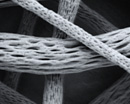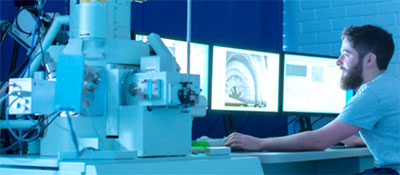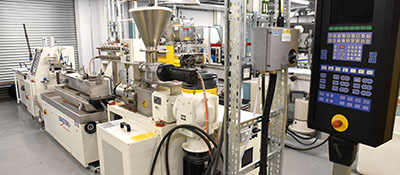Research

Processing
Processing research in the department covers a wide spectrum of materials and process types. Optimisation of material properties are key for successful processing routes and finished products.
The wide range of material types and diverse routes to finished products examined by the processing group are exemplified by the activities below. The research undertaken investigates and optimises both the bulk and surface properties of products so that service lives can be optimised or properties enhanced. Two areas of current interest are:
- Research into the causes and behaviors of tin and zinc whiskers which can cause electronic components to short circuit and, in many cases, fail completely. This has led to the development of novel polymeric conformal coatings containing nanoparticles, in conjunction with industry partner HumiSeal.
- The development of micro- and nanotechnologies for the production of bioinspired structures with controlled porosity. Electrospinning, 3D printing and phase separation methods are used to process natural and synthetic biopolymers in order to create hierarchical and porous scaffolds for tissue engineering.
Activities we address include but are not limited to:
- Polymer Processing
- Addititive manufacturing
- Electrospinning
- Development of porous membranes
- Nano particle processing
- Electroplating
- Conversion coating processes
- Anodising
- Corrosion protection techniques
- Ceramic sintering processes
More about us
Bioactive wound dressings based on nanofibres
The current research focuses on the development of micro- and nanotechnologies for the production of bioinspired structures with controlled porosity. Electrospinning, 3D printing and phase separation methods are used to process natural and synthetic biopolymers in order to create hierarchical and porous scaffolds for tissue engineering.
Read more about this case study »

Whiskermit
Tin whiskers present a significant threat to the reliability of electronic components, spanning mobile devices, medical equipment, defense and security hardware, and satellites.
The microscopic filaments – many times finer than a human hair and up to 10mm long – grow spontaneously, causing components to short circuit and, in many cases, fail completely.
Read more on the Wiskermit website »

Academics involved with the processing research area:
- Professor Gary Critchlow
- Dr Rebecca Higginson
- Dr Simon Martin
- Dr Ignacio Martin-Fabiani
- Dr Elisa Mele
- Dr Noreen Thomas
- Professor Bala Vaidhyanathan
- Professor Geoff Wilcox
- Dr Yi Liu
- Dr Simon Hogg
- Dr Mark Jepson
- Dr YauYau Tse
- Dr Sina Saremi-Yarahmadi
- Dr Hongtao Zhang



